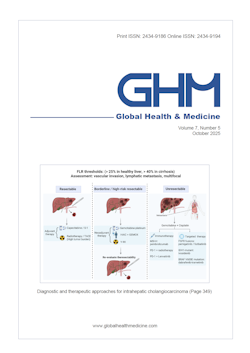Global Health & Medicine 2025;7(2):141-150.
Effect of the establishment of the Korea Centers for Disease Control and Prevention/Korea Disease Control and Prevention Agency from the perspective of global health security
Chu C
The Korea Centers for Disease Control and Prevention (KCDC) was established in 2004 after the SARS epidemic. As a national disease control agency, KCDC strengthened its capacities for global health security based on experiences from some important issues such as the Influenza A/H1N1 pandemic (2009), the Middle East Respiratory Syndrome outbreak in Korea (2015), the Zika epidemic (2016), and COVID-19 pandemic (2020-2024). KCDC can make or revise infectious disease prevention and control related law, and collect, manage and analyze disease data from all the local public health centers and medical institutions in Korea. Based on the indicator-based surveillance, event-based surveillance and laboratory-based surveillance, KCDC conducts risk assessment for public health threats and has full responsibility as a competing authority in responding to outbreaks on a legal basis, which is specified in the national disaster framework. All quarantine stations in airports and sea ports belong to KCDC, and individual international travel history data at point of entries are linked to the National Health Insurance Services Database and medical doctors can access the database when the symptomatic individual visits the clinics/hospitals to check his/her travel history in the affected countries. This is a backbone to identify and notify imported infectious diseases from local clinic/hospitals to KCDC. Based on risk assessment in KCDC, KCDC triggers the Emergency Operations Center to respond. This KCDC-centered public health governance with centralized, comprehensive surveillance and response is one of the model cases from the health security perspective to consider for countries that are to establish new national public health institutes in the post-COVID-19 era.
DOI: 10.35772/ghm.2025.01015







